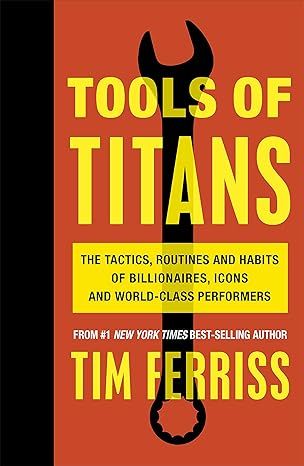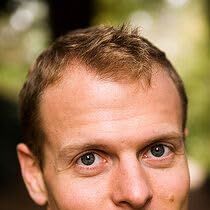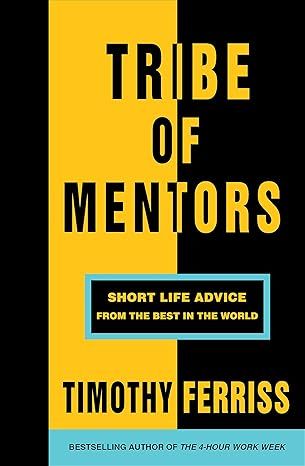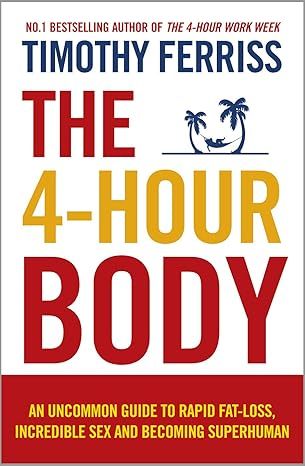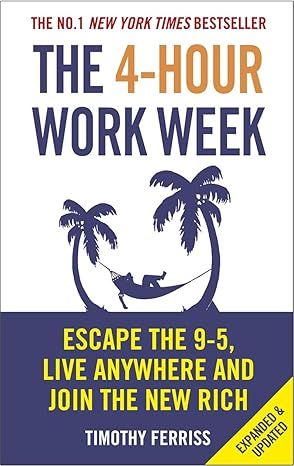Tools Of Titans: The Tactics, Routines, and Habits of Billionaires, Icons, and World-Class Performers
4.6
-
11,991 ratings
The latest groundbreaking tome from Tim Ferriss, the #1 New York Times best-selling author of The 4-Hour Workweek.
From the author:
“For the last two years, I’ve interviewed more than 200 world-class performers for my podcast, The Tim Ferriss Show. The guests range from super celebs (Jamie Foxx, Arnold Schwarzenegger, etc.) and athletes (icons of powerlifting, gymnastics, surfing, etc.) to legendary Special Operations commanders and black-market biochemists. For most of my guests, it’s the first time they’ve agreed to a two-to-three-hour interview. This unusual depth has helped make The Tim Ferriss Show the first business/interview podcast to pass 100 million downloads.
“This book contains the distilled tools, tactics, and ‘inside baseball’ you won’t find anywhere else. It also includes new tips from past guests, and life lessons from new ‘guests’ you haven’t met.
“What makes the show different is a relentless focus on actionable details. This is reflected in the questions. For example: What do these people do in the first sixty minutes of each morning? What do their workout routines look like, and why? What books have they gifted most to other people? What are the biggest wastes of time for novices in their field? What supplements do they take on a daily basis?
“I don’t view myself as an interviewer. I view myself as an experimenter. If I can’t test something and replicate results in the messy reality of everyday life, I’m not interested.
“Everything within these pages has been vetted, explored, and applied to my own life in some fashion. I’ve used dozens of the tactics and philosophies in high-stakes negotiations, high-risk environments, or large business dealings. The lessons have made me millions of dollars and saved me years of wasted effort and frustration.
“I created this book, my ultimate notebook of high-leverage tools, for myself. It’s changed my life, and I hope the same for you.”
Read more
Kindle
$0.00
or $17.99 to buy
Audiobook
$0.00
with membership trial
Hardcover
$17.36
Paperback
$5.32
Ships from
Amazon.com
Payment
Secure transaction
ISBN-10
1785041274
ISBN-13
978-1785041273
Print length
604 pages
Language
English
Publisher
Penguin Random House UK
Publication date
December 31, 2015
Dimensions
9.21 x 6.02 x 1.51 inches
Item weight
2.73 pounds
Popular highlights in this book
Success, however you define it, is achievable if you collect the right field-tested beliefs and habits.
Highlighted by 11,872 Kindle readers
The superheroes you have in your mind (idols, icons, titans, billionaires, etc.) are nearly all walking flaws who’ve maximized 1 or 2 strengths.
Highlighted by 11,445 Kindle readers
More than 80% of the interviewees have some form of daily mindfulness or meditation practice
Highlighted by 9,748 Kindle readers
Being busy is a form of laziness—lazy thinking and indiscriminate action. Being busy is most often used as a guise for avoiding the few critically important but uncomfortable actions.
Highlighted by 9,468 Kindle readers
Product details
ASIN :
1785041274
File size :
8553 KB
Text-to-speech :
Enabled
Screen reader :
Supported
Enhanced typesetting :
Enabled
X-Ray :
Enabled
Word wise :
Enabled
Editorial reviews
"Tools of Titans...is the perfect read for obsessives wanting to boost their new year productivity." —Financial Times "A Poor Richard's Almanack for the 21st century, Tools of Titans is a practical and inspiring guide to being your best." —BookPage —
Sample
Read This First—
How to Use This Book
“Out on the edge you see all kinds of things you can’t see from the center. Big, undreamed-of things—the people on the edge see them first.”
—Kurt Vonnegut
“Routine, in an intelligent man, is a sign of ambition.”
—W.H. Auden
I’m a compulsive note-taker.
To wit, I have recorded nearly every workout since age 18 or so. Roughly 8 feet of shelf space in my home is occupied by spine upon spine of notebook upon notebook. That, mind you, is one subject. It extends to dozens. Some people would call this OCD, and many would consider it a manic wild goose chase. I view it simply: It is the collection of my life’s recipes.
My goal is to learn things once and use them forever.
For instance, let’s say I stumble upon a picture of myself from June 5, 2007, and I think, “I really wish I looked like that again.” No problem. I’ll crack open a dusty volume from 2007, review the 8 weeks of training and food logs preceding June 5, repeat them, and—voilà—end up looking nearly the same as my younger self (minus the hair). It’s not always that easy, but it often is.
This book, like my others, is a compendium of recipes for high performance that I gathered for my own use. There’s one big difference, though—I never planned on publishing this one.
As I write this, I’m sitting in a café in Paris overlooking the Luxembourg Garden, just off of Rue Saint-Jacques. Rue Saint-Jacques is likely the oldest road in Paris, and it has a rich literary history. Victor Hugo lived a few blocks from where I’m sitting. Gertrude Stein drank coffee and F. Scott Fitzgerald socialized within a stone’s throw. Hemingway wandered up and down the sidewalks, his books percolating in his mind, wine no doubt percolating in his blood.
I came to France to take a break from everything. No social media, no email, no social commitments, no set plans . . . except one project. The month had been set aside to review all of the lessons I’d learned from nearly 200 world-class performers I’d interviewed on The Tim Ferriss Show, which recently passed 100,000,000 downloads. The guests included chess prodigies, movie stars, four-star generals, pro athletes, and hedge fund managers. It was a motley crew.
More than a handful of them had since become collaborators in business and creative projects, spanning from investments to indie film. As a result, I’d absorbed a lot of their wisdom outside of our recordings, whether over workouts, wine-infused jam sessions, text message exchanges, dinners, or late-night phone calls. In every case, I’d gotten to know them well beyond the superficial headlines in the media.
My life had already improved in every area as a result of the lessons I could remember. But that was the tip of the iceberg. The majority of the gems were still lodged in thousands of pages of transcripts and hand-scribbled notes. More than anything, I longed for the chance to distill everything into a playbook.
So, I’d set aside an entire month for review (and, if I’m being honest, pain au chocolat), to put together the ultimate CliffsNotes for myself. It would be the notebook to end all notebooks. Something that could help me in minutes but be read for a lifetime.
That was the lofty goal, at least, and I wasn’t sure what the result would be.
Within weeks of starting, the experience exceeded all expectations. No matter the situation I found myself in, something in this book was able to help. Now, when I’m feeling stuck, trapped, desperate, angry, conflicted, or simply unclear, the first thing I do is flip through these pages with a strong cup of coffee in hand. So far, the needed medicine has popped out within 20 minutes of revisiting these friends, who will now become your friends. Need a reassuring pat on the back? There’s someone for that. An unapologetic slap in the face? Plenty of people for that, too. Someone to explain why your fears are unfounded . . . or why your excuses are bullshit? Done.
There are a lot of powerful quotes, but this book is much more than a compilation of quotes. It is a toolkit for changing your life.
There are many books full of interviews. This is different, because I don’t view myself as an interviewer. I view myself as an experimenter. If I can’t test something or replicate results in the messy reality of everyday life, I’m not interested. Everything in these pages has been vetted, explored, and applied to my own life in some fashion. I’ve used dozens of these tactics and philosophies in high-stakes negotiations, high-risk environments, or large business dealings. The lessons have made me millions of dollars and saved me years of wasted effort and frustration. They work when you need them most.
Some applications are obvious at first glance, while others are subtle and will provoke a “Holy shit, now I get it!” realization weeks later, while you’re daydreaming in the shower or about to fall asleep.
Many of the one-liners teach volumes. Some summarize excellence in an entire field in one sentence. As Josh Waitzkin (page 577), chess prodigy and the inspiration behind Searching for Bobby Fischer, might put it, these bite-sized learnings are a way to “learn the macro from the micro.” The process of piecing them together was revelatory. If I thought I saw “the Matrix” before, I was mistaken, or I was only seeing 10% of it. Still, even that 10%—“islands” of notes on individual mentors—had already changed my life and helped me 10x my results. But after revisiting more than a hundred minds as part of the same fabric, things got very interesting very quickly. For the movie nerds among you, it was like the end of The Sixth Sense or The Usual Suspects: “The red door knob! The fucking Kobayashi coffee cup! How did I not notice that?! It was right in front of me the whole time!”
To help you see the same, I’ve done my best to weave patterns together throughout the book, noting where guests have complementary habits, beliefs, and recommendations.
The completed jigsaw puzzle is much greater than the sum of its parts.
What Makes These People Different?
“Judge a man by his questions rather than his answers.”
—Pierre-Marc-Gaston
These world-class performers don’t have superpowers.
The rules they’ve crafted for themselves allow the bending of reality to such an extent that it may seem that way, but they’ve learned how to do this, and so can you. These “rules” are often uncommon habits and bigger questions.
In a surprising number of cases, the power is in the absurd. The more absurd, the more “impossible” the question, the more profound the answers. Take, for instance, a question that serial billionaire Peter Thiel likes to ask himself and others:
“If you have a 10-year plan of how to get [somewhere], you should ask: Why can’t you do this in 6 months?”
For purposes of illustration here, I might reword that to:
“What might you do to accomplish your 10-year goals in the next 6 months, if you had a gun against your head?”
Now, let’s pause. Do I expect you to take 10 seconds to ponder this and then magically accomplish 10 years’ worth of dreams in the next few months? No, I don’t. But I do expect that the question will productively break your mind, like a butterfly shattering a chrysalis to emerge with new capabilities. The “normal” systems you have in place, the social rules you’ve forced upon yourself, the standard frameworks—they don’t work when answering a question like this. You are forced to shed artificial constraints, like shedding a skin, to realize that you had the ability to renegotiate your reality all along. It just takes practice.
My suggestion is that you spend real time with the questions you find most ridiculous in this book. Thirty minutes of stream-of-consciousness journaling (page 224) could change your life.
On top of that, while the world is a gold mine, you need to go digging in other people’s heads to unearth riches. Questions are your pickaxes and competitive advantage. This book will give you an arsenal to choose from.
Performance-Enhancing Details
When organizing all of the material for myself, I didn’t want an onerous 37-step program.
I wanted low-hanging fruit with immediate returns. Think of the bite-sized rules within these pages as PEDs—performance-enhancing details. They can be added to any training regimen (read here: different careers, personal preferences, unique responsibilities, etc.) to pour gasoline on the fire of progress.
Fortunately, 10x results don’t always require 10x effort. Big changes can come in small packages. To dramatically change your life, you don’t need to run a 100-mile race, get a PhD, or completely reinvent yourself. It’s the small things, done consistently, that are the big things (e.g., “red teaming” once per quarter, Tara Brach’s guided meditations, strategic fasting or exogenous ketones, etc.).
“Tool” is defined broadly in this book. It includes routines, books, common self-talk, supplements, favorite questions, and much more.
What Do they Have in Common?
In this book, you’ll naturally look for common habits and recommendations, and you should. Here are a few patterns, some odder than others:
More than 80% of the interviewees have some form of daily mindfulness or meditation practice
A surprising number of males (not females) over 45 never eat breakfast, or eat only the scantiest of fare (e.g., Laird Hamilton, page 92; Malcolm Gladwell, page 572; General Stanley McChrystal, page 435)
Many use the ChiliPad device for cooling at bedtime
Rave reviews of the books Sapiens, Poor Charlie’s Almanack, Influence, and Man’s Search for Meaning, among others
The habit of listening to single songs on repeat for focus (page 507)
Nearly everyone has done some form of “spec” work (completing projects on their own time and dime, then submitting them to prospective buyers)
The belief that “failure is not durable” (see Robert Rodriguez, page 628) or variants thereof
Almost every guest has been able to take obvious “weaknesses” and turn them into huge competitive advantages (see Arnold Schwarzenegger, page 176)
Of course, I will help you connect these dots, but that’s less than half of the value of this book. Some of the most encouraging workarounds are found in the outliers. I want you to look for the black sheep who fit your unique idiosyncrasies. Keep an eye out for the non-traditional paths, like Shay Carl’s journey from manual laborer to YouTube star to co-founder of a startup sold for nearly $1 billion (page 441). The variation is the consistency. As a software engineer might say, “That’s not a bug. It’s a feature!”
Borrow liberally, combine uniquely, and create your own bespoke blueprint.
This Book Is a Buffet—Here’s How to Get the Most Out of It
Rule #1: Skip Liberally.
I want you to skip anything that doesn’t grab you. This book should be fun to read, and it’s a buffet to choose from. Don’t suffer through anything. If you hate shrimp, don’t eat the goddamn shrimp. Treat it as a choose-your-own-adventure guide, as that’s how I’ve written it. My goal is for each reader to like 50%, love 25%, and never forget 10%. Here’s why: For the millions who’ve heard the podcast, and the dozens who proofread this book, the 50/25/10 highlights are completely different for every person. It’s blown my mind.
I’ve even had multiple guests in this book—people who are the best at what they do—proofread the same profile, answering my question of “Which 10% would you absolutely keep, and which 10% would you absolutely cut?” Oftentimes, the 10% “must keep” of one person was the exact “must cut” of someone else! This is not one-size-fits-all. I expect you to discard plenty. Read what you enjoy.
Rule #2: Skip, BUT do so intelligently.
All that said, take a brief mental note of anything you skip. Perhaps put a little dot in the corner of the page or highlight the headline.
Perhaps it’s skipping and glossing over precisely these topics or questions that has created blind spots, bottlenecks, and unresolved issues in your life? That was certainly true for me.
If you decide to flip past something, note it, return to it later at some point, and ask yourself, “Why did I skip this?” Did it offend you? Seem beneath you? Seem too difficult? And did you arrive at that by thinking it through, or is it a reflection of biases inherited from your parents and others? Very often, “our” beliefs are not our own.
This type of practice is how you create yourself, instead of seeking to discover yourself. There is value in the latter, but it’s mostly past-tense: It’s a rearview mirror. Looking out the windshield is how you get where you want to go.
Just Remember Two Principles
I was recently standing in Place Louis Aragon, a shaded outdoor nook on the River Seine, having a picnic with writing students from the Paris American Academy. One woman pulled me aside and asked what I hoped to convey in this book, at the core. Seconds later, we were pulled back into the fray, as the attendees were all taking turns talking about the circuitous paths that brought them there that day. Nearly everyone had a story of wanting to come to Paris for years—in some cases, 30 to 40 years—but assuming it was impossible.
Listening to their stories, I pulled out a scrap of paper and jotted down my answer to her question. In this book, at its core, I want to convey the following:
Success, however you define it, is achievable if you collect the right field-tested beliefs and habits. Someone else has done your version of “success” before, and often, many have done something similar. “But,” you might ask, “what about a first, like colonizing Mars?” There are still recipes. Look at empire building of other types, look at the biggest decisions in the life of Robert Moses (read The Power Broker), or simply find someone who stepped up to do great things that were deemed impossible at the time (e.g., Walt Disney). There is shared DNA you can borrow.
The superheroes you have in your mind (idols, icons, titans, billionaires, etc.) are nearly all walking flaws who’ve maximized 1 or 2 strengths. Humans are imperfect creatures. You don’t “succeed” because you have no weaknesses; you succeed because you find your unique strengths and focus on developing habits around them. To make this crystal-clear, I’ve deliberately included two sections in this book (pages 197 and 616) that will make you think: “Wow, Tim Ferriss is a mess. How the hell does he ever get anything done?” Everyone is fighting a battle you know nothing about. The heroes in this book are no different. Everyone struggles. Take solace in that.
A Few Important Notes on Format
Structure
This book is comprised of three sections: Healthy, Wealthy, and Wise. Of course, there is tremendous overlap across the sections, as the pieces are interdependent. In fact, you could think of the three as a tripod upon which life is balanced. One needs all three to have any sustainable success or happiness. “Wealthy,” in the context of this book, also means much more than money. It extends to abundance in time, relationships, and more.
My original intention with The 4-Hour Workweek (4HWW), The 4-Hour Body (4HB), and The 4-Hour Chef (4HC) was to create a trilogy themed after Ben Franklin’s famous quote: “Early to bed and early to rise, makes a man healthy, wealthy, and wise.”
People constantly ask me, “What would you put in The 4-Hour Workweek if you were to write it again? How would you update it?” Ditto for 4HB and 4HC. Tools of Titans contains most of the answers for all three.
Extended quotes
Before writing this book, I called Mason Currey, author of Daily Rituals, which profiles the rituals of 161 creatives like Franz Kafka and Pablo Picasso. I asked him what his best decisions were related to the book. Mason responded with, “[I] let my subjects’ voices come through as much as possible, and I think that was one of things that I did ‘right.’ Often, it wasn’t the details of their routine/habits, so much as how they talked about them that was interesting.”
This is a critical observation and exactly why most “books of quotes” fail to have any real impact.
Take, for example, a one-liner like “What’s on the other side of fear? Nothing.” from Jamie Foxx. It’s memorable, and you might guess at the profound underlying meaning. I’d still wager you’d forget it within a week. But, what if I made it infinitely more powerful by including Jamie’s own explanation of why he uses that maxim to teach his kids confidence? The context and original language teaches you how to THINK like a world-class performer, not just regurgitate quotes. That is the key meta-skill we’re aiming for. To that end, you’ll see a lot of extended quotes and stories.
I’ve occasionally bolded lines within quotes. This is my emphasis, not the guest’s.
How to Read Quotes—The Micro
. . . = Portion of dialogue omitted
[words in brackets] = additional information that wasn’t part of the interview but may be necessary to understand what’s being discussed, or related info or recommendations from yours truly
How to Read Quotes—The Macro
One of my podcast guests, also one of the smartest people I know, was shocked when I showed him his raw transcript. “Wow,” he said. “I generally like to think of myself as a decently smart guy, but I use past, present, and future tense like they’re the same fucking thing. It makes me sound like a complete moron.”
Transcripts can be unforgiving. I’ve read my own, so I know how bad it can be.
In the heat of the moment, grammar can go out the window, to be replaced by false starts and sentence fragments. Everyone starts an ungodly number of sentences with “And” or “So.” I and millions of others tend to use “and I was like” instead of “and I said.” Many of us mix up plural and singular. This all works fine in conversation, but it can hiccup on the printed page.
Quotations have therefore been edited in some cases for clarity, space, and as a courtesy to guests and readers alike. I did my best to preserve the spirit and point of quotes, while making them as smart and readable as possible. Sometimes I keep it fast and loose to preserve the kinetic energy and emotion of the moment. Other times, I smooth out the edges, including my own stammering.
If anything sounds silly or off, assume it was my mistake. Everyone in this book is amazing, and I’ve done my best to showcase that.
Patterns
Where guests have related recommendations or philosophies, I’ve noted them in parentheses. For instance, if Jane Doe tells a story about the value of testing higher prices, I might add “(see Marc Andreessen, page 170),” since his answer to “If you could have a billboard anywhere, what would you put on it?” was “Raise prices,” which he explains in depth.
Humor!
I’ve included ample doses of the ridiculous. First of all, if we’re serious all the time, we’ll wear out before we get the truly serious stuff done. Second, if this book were all stern looks and no winks, all productivity and no grab-assing, you’d remember very little. I agree with Tony Robbins (page 210) that information without emotion isn’t retained.
Look up “von Restorff effect” and “primacy and recency effect” for more science, but this book has been deliberately constructed to maximize your retention. Which leads us to . . .
Spirit animals
Yes, spirit animals. There wasn’t room for photographs in this book, but I wanted some sort of illustrations to keep things fun. It seemed like a lost cause, but then—after a glass or four of wine—I recalled that one of my guests, Alexis Ohanian (page 194), likes to ask potential hires, “What’s your spirit animal?” Eureka! So, you’ll see thumbnail spirit animals for anyone who would humor me and play along. The best part? Dozens of people took the question very seriously. Extended explanations, emotional changes of heart, and Venn diagrams ensued. Questions poured in: “Would a mythological creature be acceptable?” “Can I be a plant instead?” Alas, I couldn’t get a hold of everyone in time for publication, so drawings are sprinkled throughout like Scooby snacks. In a book full of practicality, treat these like little rainbows of absurdity. People had fun with it.
Non-profile content and Tim Ferriss chapters
In all sections, there are multiple non-profile pieces by guests and yours truly. These are typically intended to expand upon key principles and tools mentioned by multiple people.
URLs, websites, and social media
I’ve omitted most URLs, as outdated URLs are nothing but frustrating for everyone. For nearly anything mentioned, assume that I’ve chosen wording that will allow you to find it easily on Google or Amazon.
All full podcast episodes can be found at fourhourworkweek.com/podcast. Just search the guest’s name, and the extended audio, complete show notes, links, and resources will pop up like warm toast on a cold morning.
In nearly every guest’s profile, I indicate where you can best interact with them on social media: TW = Twitter, FB = Facebook, IG = Instagram, SC = Snapchat, and LI = LinkedIn.
Read more
About the authors
Timothy Ferriss
Tim Ferriss has been listed as one of Fast Company‘s ‘Most Innovative Business People’ and one of Fortune‘s ‘40 under 40’. He is an early-stage technology investor/advisor (Uber, Facebook, Shopify, Duolingo, Alibaba, and 50+ others) and the author of four #1 New York Times and Wall Street Journal bestsellers, including The 4-Hour Workweek, The 4-Hour Body, The 4-Hour Chef and Tools of Titans. The Observer and other media have called Tim ‘the Oprah of audio’ due to the influence of The Tim Ferriss Show podcast, which is the first business/interview podcast to exceed 200 million downloads. Tim received his BA from Princeton University in 2000, where he focused on language acquisition and East Asian Studies. He developed his non-fiction writing with Pulitzer Prize winner John McPhee and formed his life philosophies under Nobel Prize winner Kenzaburo Oe. He is far dumber than both. Tim enjoys bear claws, chocolate croissants, writing ‘About’ pages in third person and neglecting italics.
Read more
Reviews
Customer reviews
4.6 out of 5
11,991 global ratings
Terry Middleton
5
Strap in for a wonderful journey...you are about to encournter amazing and discover yourself
Reviewed in the United States on March 11, 2017
Verified Purchase
What do people who are crazy successful or who have accomplished the amazing have it common with you and me?
Everything in common...they are absolutely no different than you and me
7 people found this helpful
Sherry V.
5
Educational
Reviewed in the United States on April 14, 2024
Verified Purchase
Information in this book will change your attitude. There is a lot of perspectives on how to grasp your inner self & how to live with these teachings from many of the pros in this book. It shows how even the most wealthy are human & had to start somewhere to get where they are now. It's a long read but very uplifting for anyone feeling like they're stuck somewhere in their life. Jocko Willink is one of the best individuals interviewed by Tim Ferriss that shows you can achieve virtually anything as long as you're disciplined. Great book
Read more
3 people found this helpful
Karen Briscoe
5
Inspiration and Insights
Reviewed in the United States on August 20, 2024
Verified Purchase
Inspiration and insights on the tactics, routines, and habits of icons, billionaires and world-class performers. Achive a higher level of success by reading this book. Karen Briscoe, author
Top Timothy Ferriss titles
View allBest sellers
View all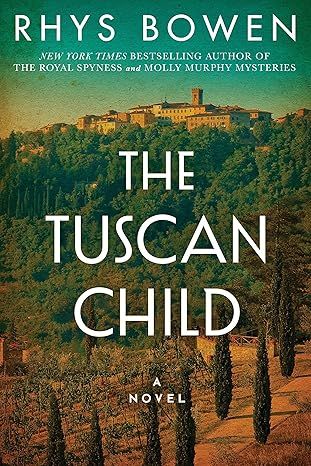
The Tuscan Child
4.2
-
100,022
$8.39
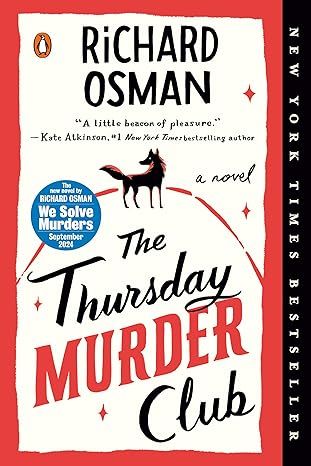
The Thursday Murder Club: A Novel (A Thursday Murder Club Mystery)
4.3
-
155,575
$6.33
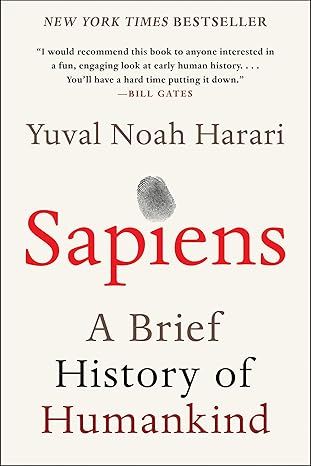
Sapiens: A Brief History of Humankind
4.6
-
140,302
$13.49
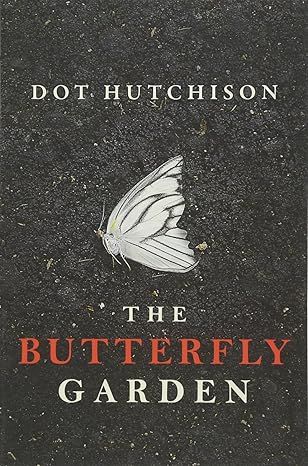
The Butterfly Garden (The Collector, 1)
4.3
-
88,556
$9.59
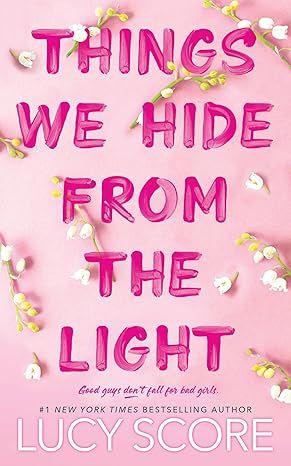
Things We Hide from the Light (Knockemout Series, 2)
4.4
-
94,890
$11.66
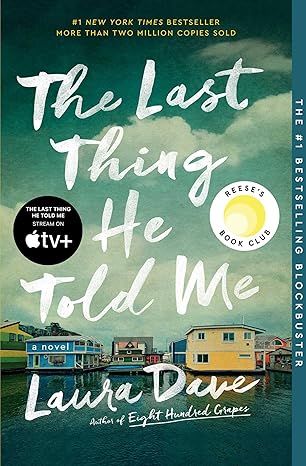
The Last Thing He Told Me: A Novel
4.3
-
154,085
$2.99
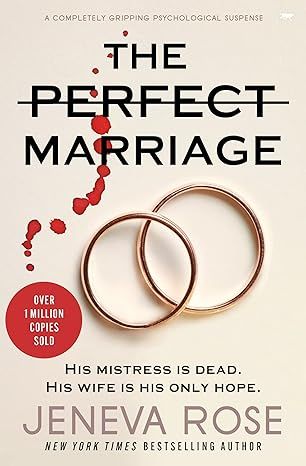
The Perfect Marriage: A Completely Gripping Psychological Suspense
4.3
-
143,196
$9.47
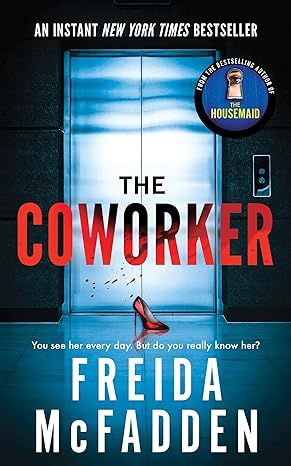
The Coworker
4.1
-
80,003
$13.48
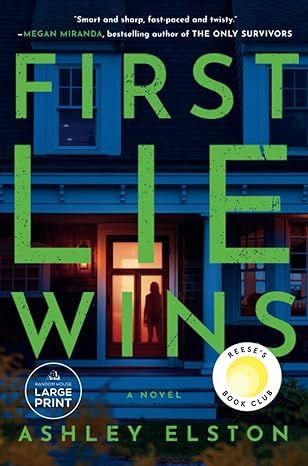
First Lie Wins: A Novel (Random House Large Print)
4.3
-
54,062
$14.99

Mile High (Windy City Series Book 1)
4.4
-
59,745
$16.19

Layla
4.2
-
107,613
$8.99
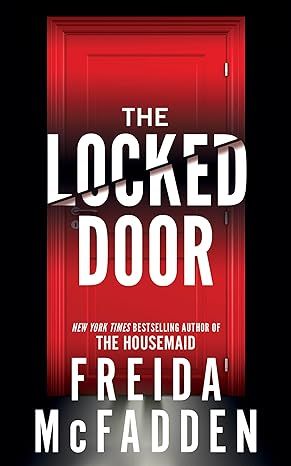
The Locked Door
4.4
-
94,673
$8.53
